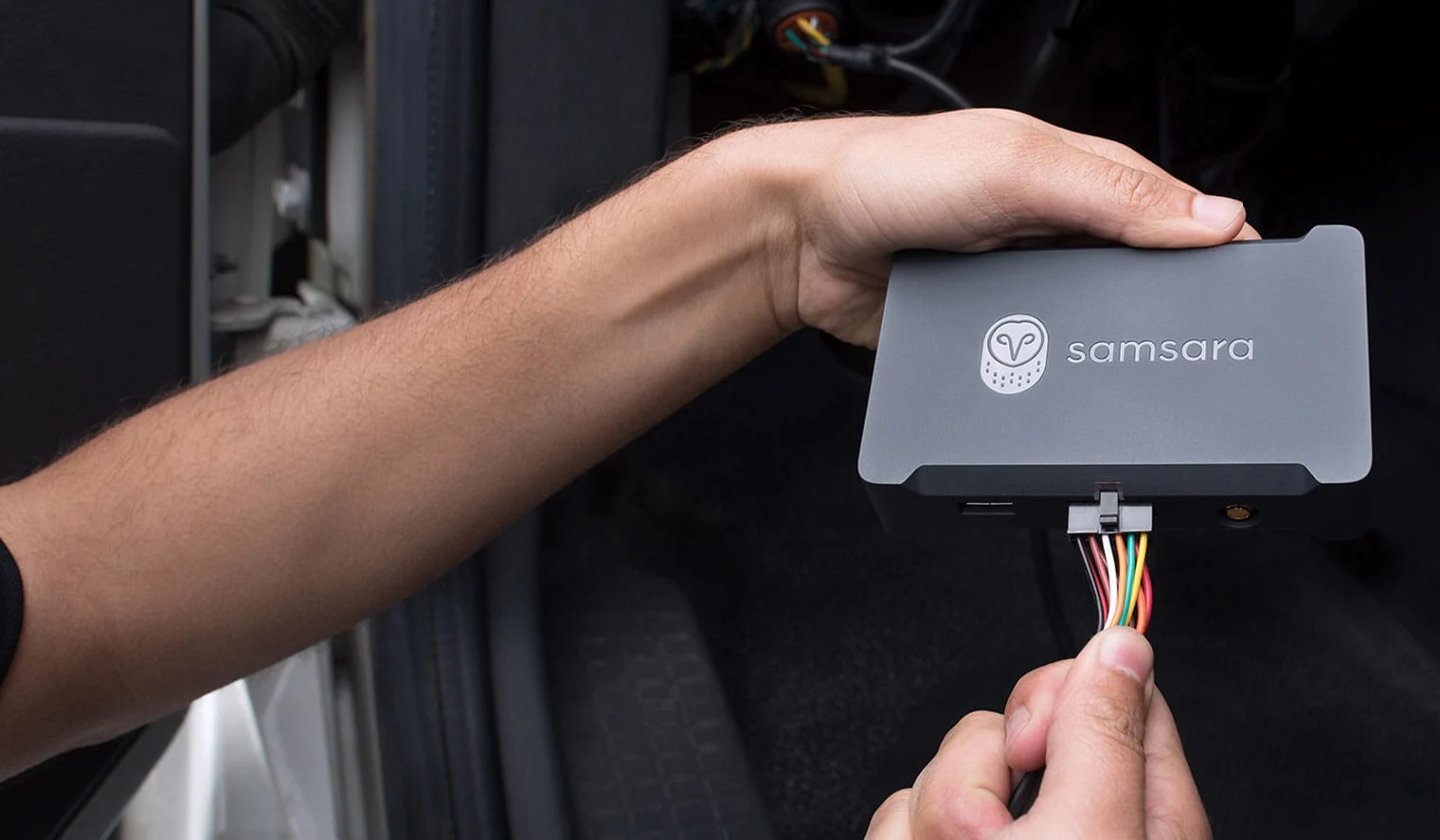Safety
MPs conference hears how Samsara's AI-driven safety tools target distracted driving
April 24, 2025
Enterprise Account Executive

Get the latest from Samsara
Subscribe nowI recently spoke at a conference organised by the Parliamentary Advisory Council for Transport Safety (PACTS), a group that aims to inform legislators about transport safety in the UK.
The PACTS Spring Conference brought together experts, policymakers, and industry leaders to explore how technology can reduce road risk and enhance public safety.
While speeding remains the number one cause of fatal crashes in the UK, I wanted to shine a light on an issue that’s often overlooked: distracted driving.
A recent State of Connected Operations Report by Samsara – Behind the Wheel: Distracted Driving in Physical Operations – found 93% of commercial drivers report personally experiencing the effects of distracted driving, including vehicle damage, personal injury, fines, and licence suspensions.
In the last year alone, a staggering 84% of drivers in the UK&I reported experiencing a "close call" or near-miss due to distraction.
The research also found that 93% of UK&I drivers are more likely to stay with companies that proactively work to prevent distractions, further evidence that drivers want AI and other supportive technologies to help improve safety.
For Samsara, tackling distracted driving – whether it’s people using a mobile phone, eating or being tired at the end of a long shift – is all about prevention. For us, it’s about giving drivers the tools and support they need to refocus ‘in the moment’ before anything happens. And that’s where AI is starting to make a real impact.
Driving distraction: visual, manual or cognitive
Our AI-powered dash cams are so smart they can detect when a driver looks away from the road – whether it’s to check a phone or glance at an in-cab screen. When that happens, the system sends an audible in-cab alert to help the driver refocus there and then.
That moment of feedback can be the difference between a near miss and a serious incident.
Our technology also monitors behaviours like harsh braking, swerving, and lane departure, which often indicate that the driver is physically distracted. That data can then be used later to support targeted coaching and help develop safer habits across the fleet.
But, perhaps, the hardest type of distraction to identify is cognitive distraction – in other words, when people are not mentally focused on the road. Thanks to advancements in AI, our cameras can now spot when people are displaying signs of being drowsy by detecting over 17 indicators of drowsiness, including blink increases, yawning, and head nodding, to alert drivers when they may need to rest.
While distractions come in many forms, what links them all is that each undermines a driver’s ability to respond to hazards or stay in control of their vehicle. And that’s dangerous. And that’s why Samsara invests so much in developing solutions to improve safety.
Safety first
One of the key messages I shared at the conference is that it’s not enough just to monitor what happened. We also have to understand why it happened – and how to stop it from happening again. That means combining traditional tools like speed monitoring with AI-driven safety technology that can help prevent distraction in the first place, and then using these to support longer-term coaching to change driver behaviour.
It’s why, for example, we recently unveiled Samsara’s Intelligent Safety Inbox and new AI-powered Insights – a smarter way to see risk, coach drivers and recognise great performance.
Often, when cameras are first installed, we see an immediate improvement in behaviour – a kind of ‘placebo effect’ as drivers become more aware of their actions. Over time, this real-time coaching and alerts reinforce those habits.
And it seems that message is gaining traction. One thing I took away from the PACTS event is that there’s a growing appetite for smarter, data-driven solutions to road safety challenges. We can’t eliminate human error, but we can give drivers the tools and feedback they need to stay focused and stay safe.
Despite all the advantages, we do see pushback from some drivers, which is why any shift to introduce this technology needs to be part of a broader change management programme. Why? Because when drivers understand that this technology is there to protect them – not monitor them – acceptance rates rise dramatically. In fact, 70% of drivers report feeling positive about the tech when it’s introduced with the right messaging. [Source: 2022 survey conducted by Together for Safer Roads]
Why real-time insights matter
At Samsara, we work with organisations across the UK to help them keep their drivers and communities safe. Our Connected Operations Platform combines AI, telematics, and real-time alerts to help fleets detect and address distraction before it leads to harm.
In fact, across the entire Samsara platform, AI technology helped prevent an estimated 200,000 accidents last year alone, through real-time feedback and insights across large commercial fleets.
At Samsara, we believe that visibility is the first step toward accountability. By detecting distraction in all its forms – visual, manual, and cognitive – and acting on those insights in real time, we can help create safer roads not just for professional drivers, but for everyone.
Get the latest from Samsara
Subscribe now















